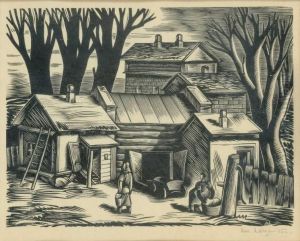Arkadio Laigo Paintings
Arkadio Laigo was an Estonian artist, known for his contributions to painting and graphic art. Born on November 24, 1901, in Vändra, Estonia, which was then part of the Russian Empire, Laigo became active during the interwar period, a time when Estonia experienced a brief period of independence between the two World Wars.
Laigo's early life and education were rooted in Estonia's cultural milieu. He studied at the Pallas Art School in Tartu, one of the most significant institutions for artistic training in Estonia during the early 20th century. There, he was influenced by the teachings of prominent Estonian artists such as Konrad Mägi and Ado Vabbe, who encouraged experimentation and the exploration of various modernist styles.
Throughout his career, Laigo developed a distinctive style that often incorporated elements of Expressionism and Art Deco, reflecting the broader trends in European art of that era. His work was marked by a bold use of color and dynamic compositions, and he frequently depicted landscapes, cultural scenes, and figures that embodied the spirit and identity of Estonia.
Laigo was also a member of the Estonian Artists' Group, which played a crucial role in the development of modern art in the country. His contributions to the group helped to foster a sense of national identity through art, which was particularly important during the turbulent years of Estonia's fight for independence and subsequent occupation by the Soviet Union.
Arkadio Laigo's career was tragically cut short by his untimely death on November 11, 1944, during World War II. Despite his early death, Laigo left behind a considerable body of work that continues to be celebrated in Estonia and beyond. His legacy is preserved in the collections of Estonian museums and galleries, and he is remembered as a key figure in the country's artistic heritage.
